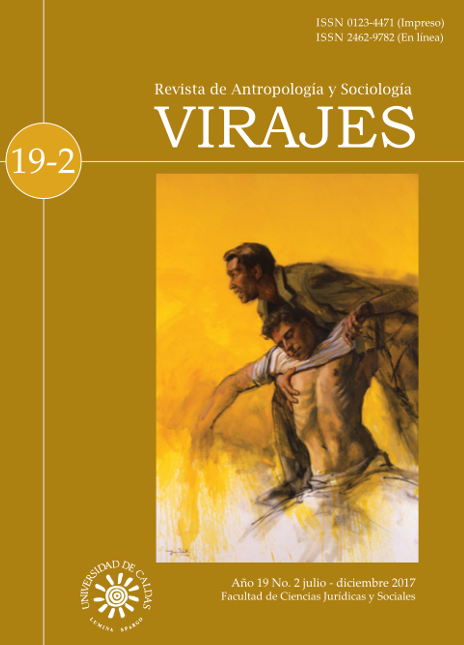Authors
Abstract
The baroque period, in which absolutism cohabit with the century of the Light, is considered the last great European style. The theater, the ceremonial and the parties of the court are not only the expression of the vitality of the baroque, they are also presented as a very elaborate form of mass domination. It was about “disciplining the institutions” and for them they needed to recruit new actors. It was about gathering and unifying the forces involved in the battle. And it was the Council of Trent that assumed this role. At the local level, the Associations and Brotherhoods were in charge of controlling the workforce and the labor force. In Council of Trento the clerical and hierarchical conception of the society were reinforced, assigning to the clergy a watchfulness role.
References
Bonet, A. (1990). Fiesta, poder y arquitectura. Aproximación al barroco español. Madrid, España: Akal.
Brunon, J.-C. (1994). Baroque. Dictionnaire Universel des Littératures. Paris, France: PUF.
Burrieza, J. (2004). Cinco siglos de cofradías y procesiones. Valladolid, España: Junta de Cofradías de Semana Santa de Valladolid.
Chédozeau, B. (1989). Le Baroque. Paris, France: Nathan.
Código del Derecho Canónico. 1917.
Cortés, N.A. (ed.) (1972). Vida cotidiana en la corte de Valladolid. Valladolid, España: Municipalidad de Valladolid.
Dasas, D. (1999). L’illusion baroque. Paris, France: Gallimard.
de Leturia, P. (1945). Perché la nascente Chiesa ispanoamericana non fue representada en Trento. Relaciones entre la Santa Sede e Hispanoamérica, 1, 495-509.
de Viau, T. (1621). Obras. Madrid, España: Francisco de Paula Mellado ed.
Dubois, C.G. (1972). Le Baroque: Profondeurs de l’apparence. Paris, France: Larousse.
Falguiere, P. (2004). Le maniérisme. Une avant-garde au XVIe siècle. Paris, France: Gallimard.
Fernández Serrano, F. (1975). Las escuelas de Cristo. La vida Sobrenatural, LV, 106-116.
Jouhandeau, M. (1957). Saint Philippe Néri. Paris, France: Plon.
Hernández Díaz, J. (1984). El maestro imaginero Juan de Mesa y la escultura andaluza de su tiempo. Academia: Boletín de la Real Academia de Bellas Artes de San Fernando, 58, 25-76.
Martínez, F. y Rodríguez, A. (2002). Del barroco a la Ilustración en una fiesta del Antiguo Régimen: el Corpus Cristi. Cuadernos de Historia Moderna, 1, 151-175.
Mathieu-Castelloni, G. (1986). Eros Baroque. Paris, France: Nizet.
Meriol, T. (1986). San Felipe Neri, apóstol de Roma 1515-1595. Bilbao, España: Loyola grupo de comunicación.
Moisset, J.-P. (2006). Histoire du catholicisme. Paris, France: Flammarion.
Ponelle, L. et Bordet, L. (1958). Saint Philippe Néri et la société romaine de son temps (1515- 1593). Paris, France: Librairie Bloud.
Pozo, M. (1993). La Santa y venerable Escuela de Cristo: una institución singular y característica de la ciudad de Tijona. Recuperado de http://web.archive.org/web/20100105131930/http://www.tijola.org:80/tijola/cultura/escristo.htm.
San Juan de la Cruz. (2007). Subida al Monte Carmelo. Sevilla :Editorial Apostolado Mariano.
Sánchez, J. (1996). El origen de las cofradías de Semana Santa en la península Ibérica. Temas Medievales, 6, 31-79.
Schilling, H. (2000). Charles Quint et la religion: La lutte, la pureté et l’unité du christianisme. Charles Quint 1558 (pp. 285-364). Paris, France: Actes Sud.
Souillier, D. (1988). La Littérature baroque en Europe. Paris, France: PUF.
Tapie, A. (2003). Baroque vision jésuite: Du Tintoret a Rubens. Paris, France: Editions d’Art.
Vauchez, A. (1987). Les laïcs au Moyen Age. Pratiques et expériences religieuses. Paris, France: Les éditions du Cerf.
Wölfflin, H. (1952). Principios fundamentales de la historia del arte. Madrid, España: Editorial Ágora.

 PDF (Español)
PDF (Español)
 FLIP
FLIP



















